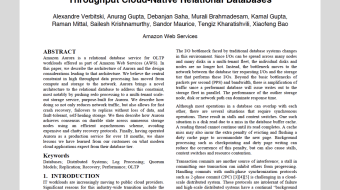Customer-obsessed science


Research areas
-
September 26, 2025To transform scientific domains, foundation models will require physical-constraint satisfaction, uncertainty quantification, and specialized forecasting techniques that overcome data scarcity while maintaining scientific rigor.
-
Featured news
-
PRX2024Cat qubits, a type of bosonic qubit encoded in a harmonic oscillator, can exhibit an exponential noise bias against bit-flip errors with increasing mean photon number. Here, we focus on cat qubits stabilized by two-photon dissipation, where pairs of photons are added and removed from a harmonic oscillator by an auxiliary, lossy buffer mode. This process requires a large loss rate and strong nonlinearities
-
Fill-in-the-Middle (FIM) has become integral to code language models, enabling generation of missing code given both left and right contexts. However, the current FIM training paradigm, which reorders original training sequences and then performs regular next-token prediction (NTP), often leads to models struggling to generate content that aligns smoothly with the surrounding context. Crucially, while existing
-
Journal of Physics Communications2024This study investigates the application of machine learning (ML) models for predicting transient responses in ball-impact elastodynamics simulations. We focus on the canonical problem of ball impact on laminated structures, which captures essential physics while maintaining computational tractability. Novel contributions include: (1) development of a temporal multi-resolution strategy for stable long-time
-
Machine Learning for Health Symposium 20242024Generalist large language models (LLMs), not developed to do particular medical tasks, have achieved widespread use by the public. To avoid medical uses of these LLMs that have not been adequately tested and thus minimize any potential health risks, it is paramount that these models use adequate guardrails and safety measures. In this work, we propose a synthetic medical prompt generation method to evaluate
-
ECIR 20252024Training sequential recommenders such as SASRec with uniform sample weights achieves good overall performance but can fall short on specific user groups. One such example is popularity bias, where mainstream users receive better recommendations than niche content viewers. To improve recommendation quality across diverse user groups, we explore three Distributionally Robust Optimization(DRO) methods: Group
Collaborations
View allWhether you're a faculty member or student, there are number of ways you can engage with Amazon.
View all














































